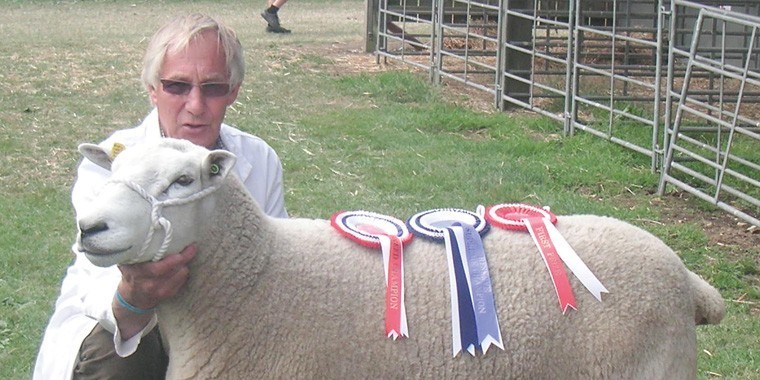At the time of writing it’s the third week of March and lambing is almost done with just two ewes hanging on as they do, just to be contrary.
It is tempting just to ease up a bit. But the tail enders are an older ewe who should know what she‘s doing and will probably just get on with it and a teg, one of a group I bought in from a society sale as a ewe lamb, who might just need a bit of watching. It would be a pity to loose a lamb or spoil a potentially good ewe just for an earlier night.
In theory, based on tupping dates, they should all be lambed in the next two days, but sheep being sheep they may well hang on into next week. I was hoping that I might be able to better my own record of 18 days from start to finish of lambing, but they seem determined to thwart that ambition.
It is the unpredictability of sheep that makes them so interesting and this lambing has certainly been interesting – but interesting in the same way that Brexit and the inevitable consequences will make agriculture “interesting” over the next 10 to 15 years.
Things started badly with an unusually high number of ewes going down with hypocalcaemia in the week before lambing – more than I have had, in total, over the past five years or more. With no obvious trigger, this unfortunately had a negative impact on some subsequent lambings.
Conversations I’ve had over the past few months with scanners and breeders all along the south coast from Devon to Kent had prepared me to expect an above average number of singles this year. But the run of singles at the start of lambing still came as a bit of a shock as did the variation in lamb birth weights.
In 30 plus years of lambing my own flock I have never seen such variation in lamb birth weights. Lambs out of ewes carrying the same number of lambs, all fed and managed the same way, have varied by as much as 100%, with no obvious reason. At least, in this, I can derive some comfort in knowing that I am not alone. A lot of flock owners seem to be having the same experience, with flock sizes ranging from a couple of dozen to several thousand ewes.
The only conclusion that we have been able to arrive at was that poor grass quality in early pregnancy had a negative impact on placental development which has in turn limited lamb growth in some ewes, regardless of the level of feeding in late pregnancy. In a similar vein a lot of flock owners seem to have struggled to maintain ewe condition through pregnancy.
One advantage of regular body condition scoring is being able to spot such problems early and do something about it. Many breeders have had to feed a lot harder this year – some since the new year – simply to hold body condition. This is a possible consequence of the dry autumn, with grass in front of sheep but no significant feed value in the grass. The problems culminated in an emergency caesarian in the middle of one night, another first: I must admit I was impressed with the young Scots vet who came out from Westpoint. At least she had a good try at lambing the ewe before deciding that the lambs would have to come out through the side door. But once the decision was made the whole operation was carried out, by torchlight, very calmly and very tidily within a little more than half an hour after which mum was in a pen, back on her feet, cleaning off a fine pair of lambs.
The really infuriating aspect of this was that having tidied up we left the ewe, with a nice shiny, silver caesarian scar, chuntering away to her lambs, at a little after one in the morning. By 6am the next morning she was pawing the gate on the front of the pen and shouting for her feed, with two lambs full of colostrum; a remarkable example of how resilient sheep are. Within a few days she was back out to grass with her lambs kept very close.
From that point on things have improved, with a good run of the usual twins and not too many triplets. The wide variation in lamb birth weights, however, seems to have persisted, although all of the lambs – even the lighter birth weights – have been very robust, not the feeble lambs that one often sees with relatively low birth weight lambs. I just want our two laggards to get on with it so that we can relax a bit.
A number of breeders that I have spoken to report a range of anomalies including a small but significant number of lambs that have been born with coordination problems and unable to get on their feet. Some think this may be Schmallenberg related; which, even though there only limited reports of confirmed cases in the South East area, has presented quite significant problems in other parts of the country this season, a situation that does need watching. For those still to lamb, I wish you well and hope that your lambings are not quite as “interesting” as mine has been.




